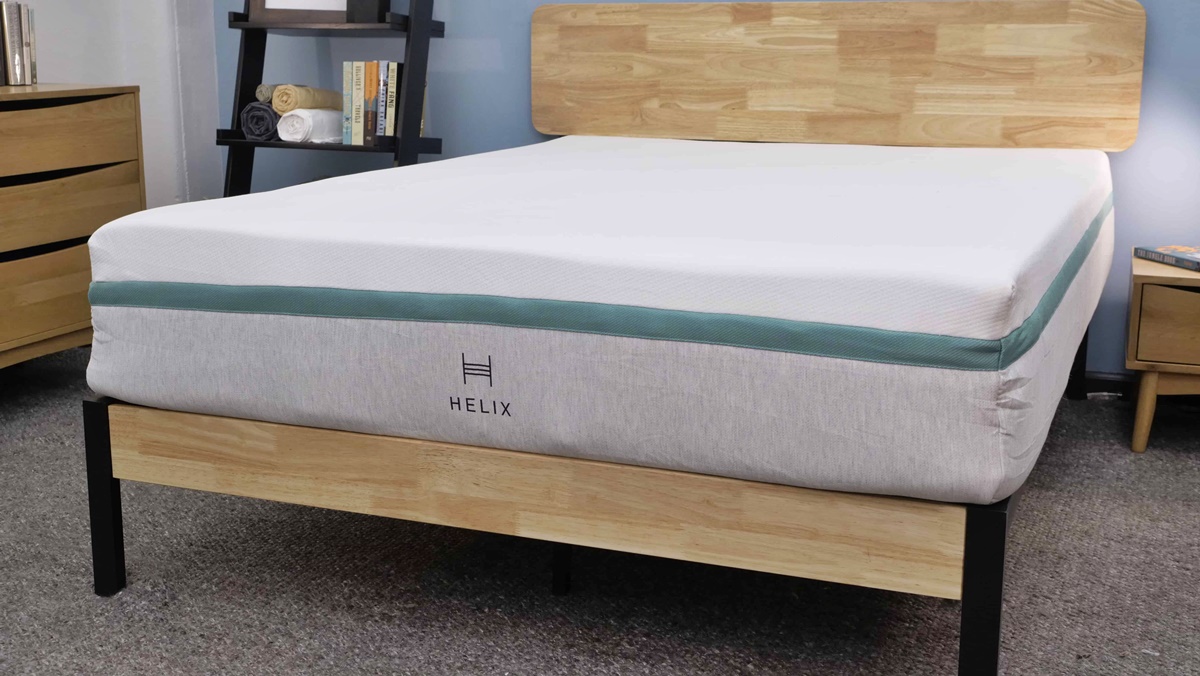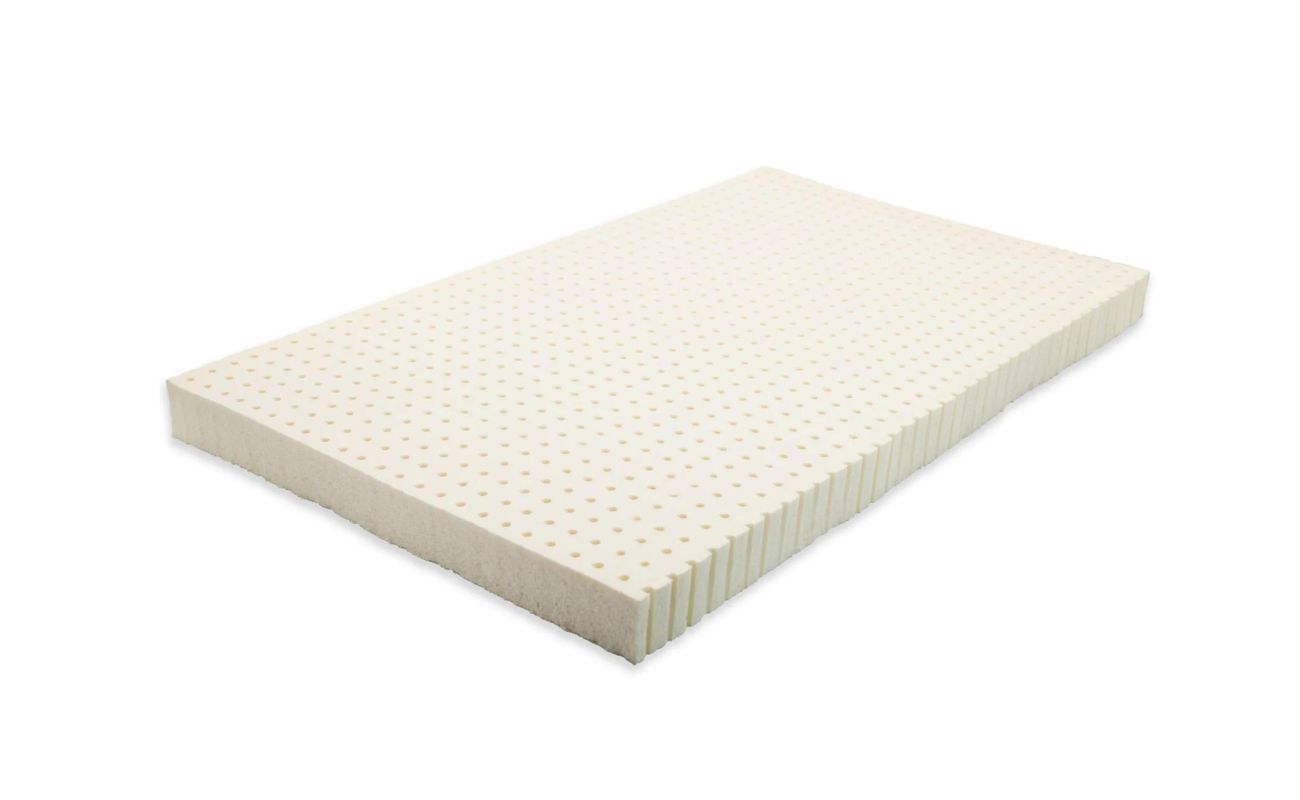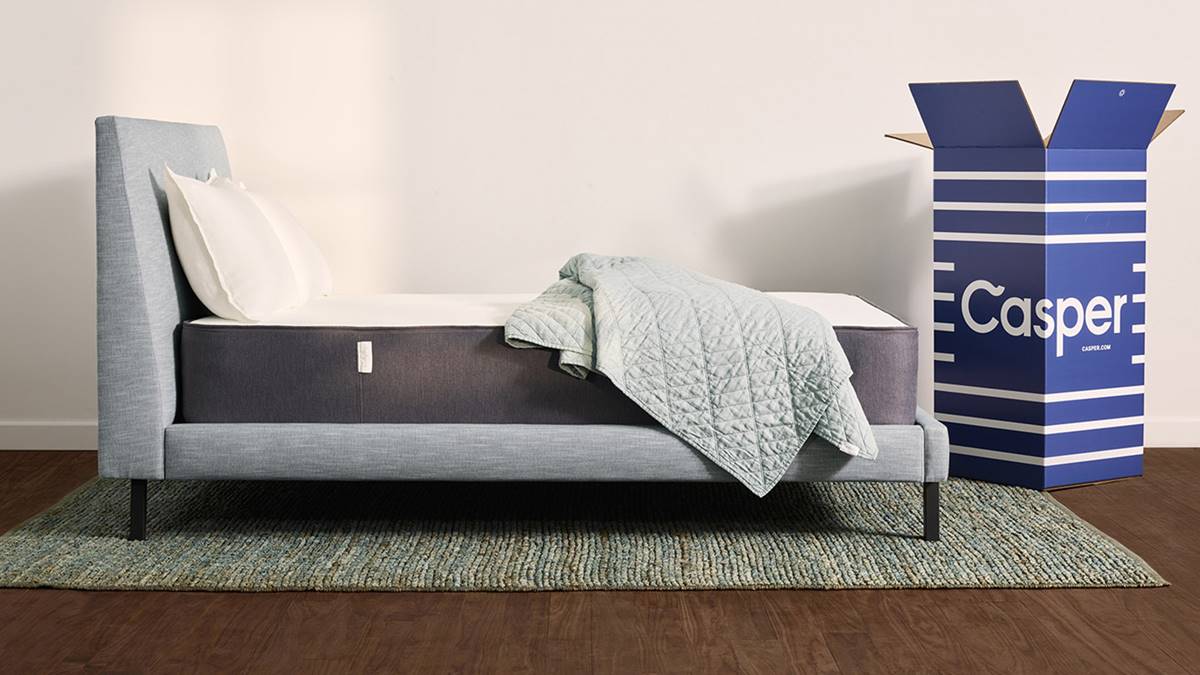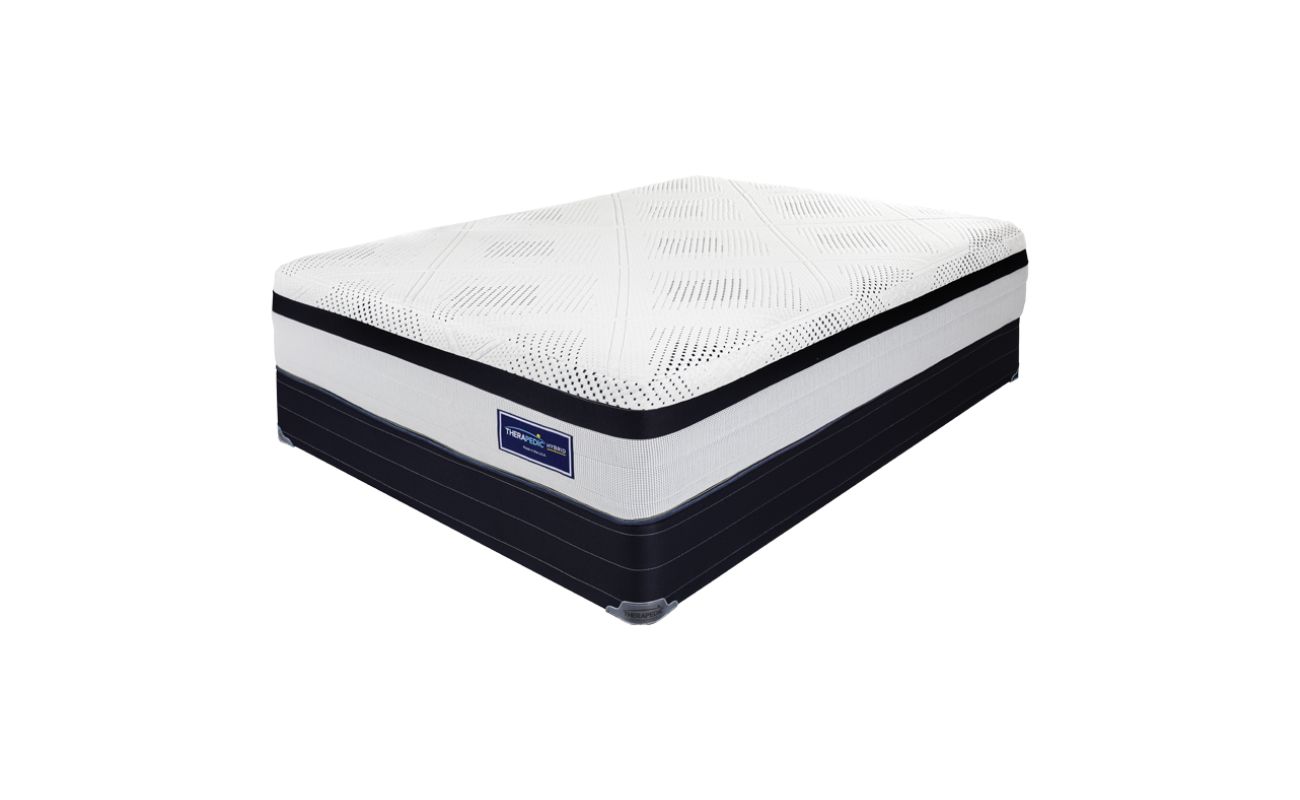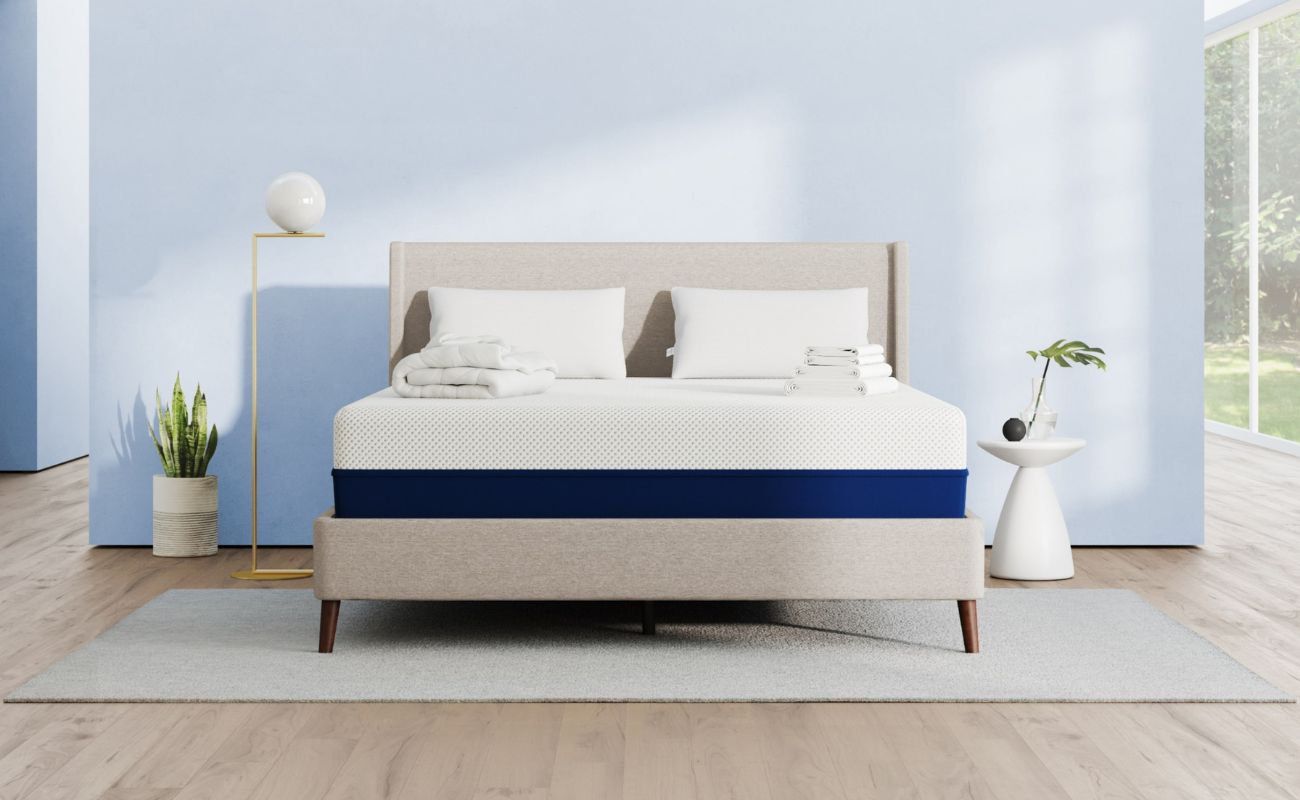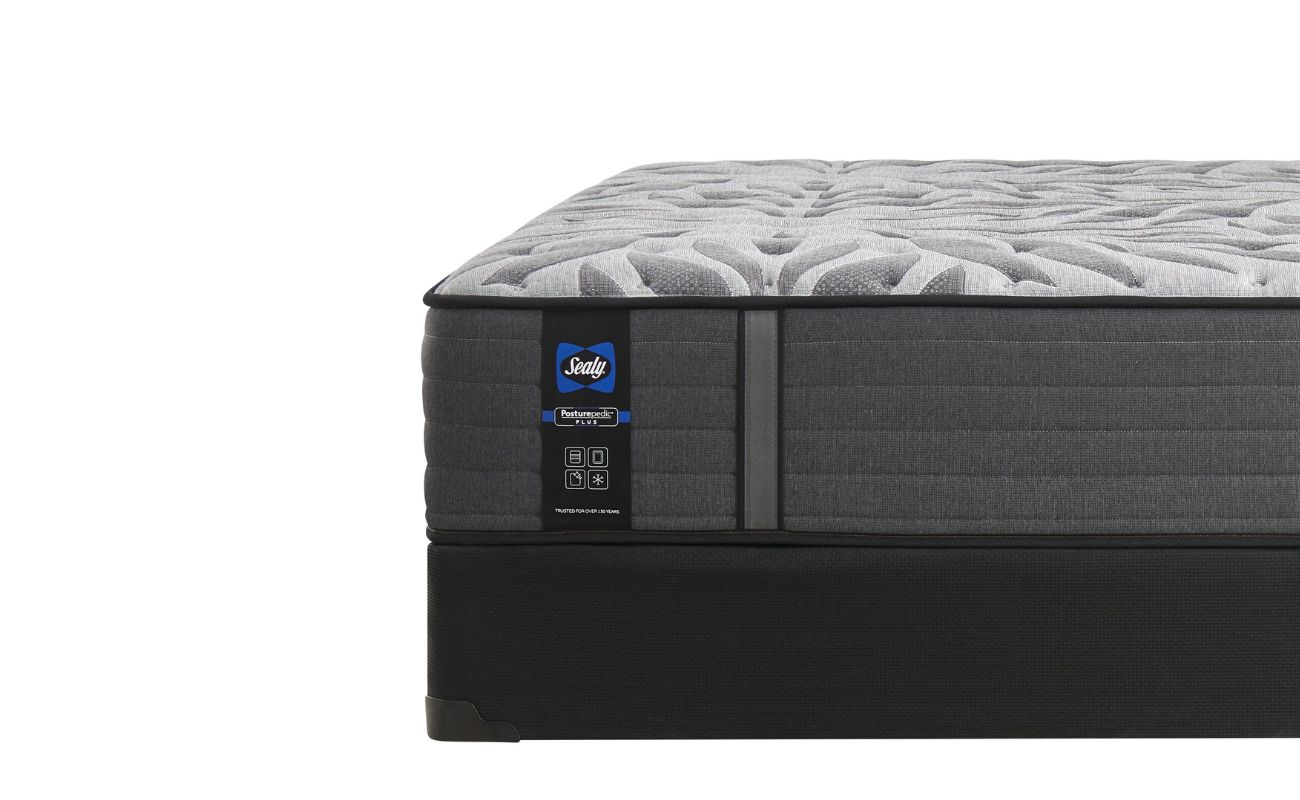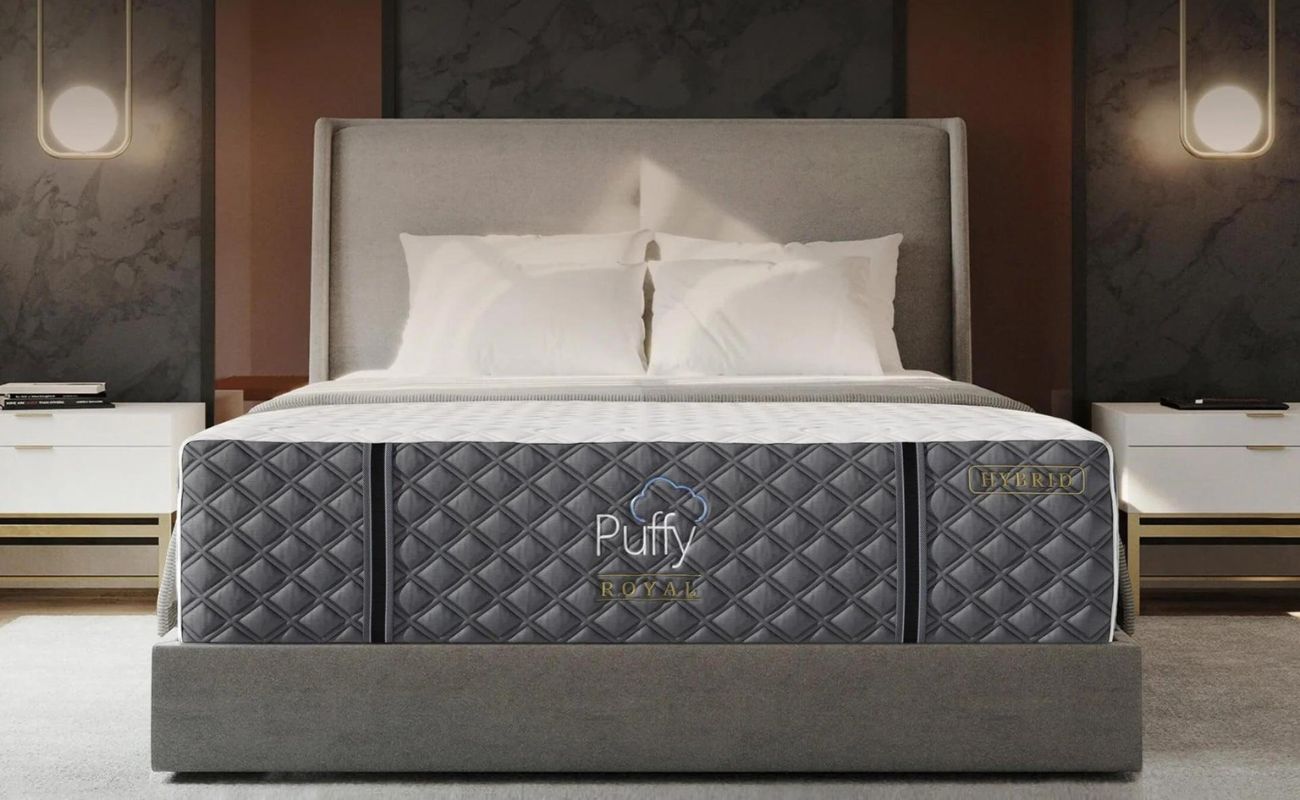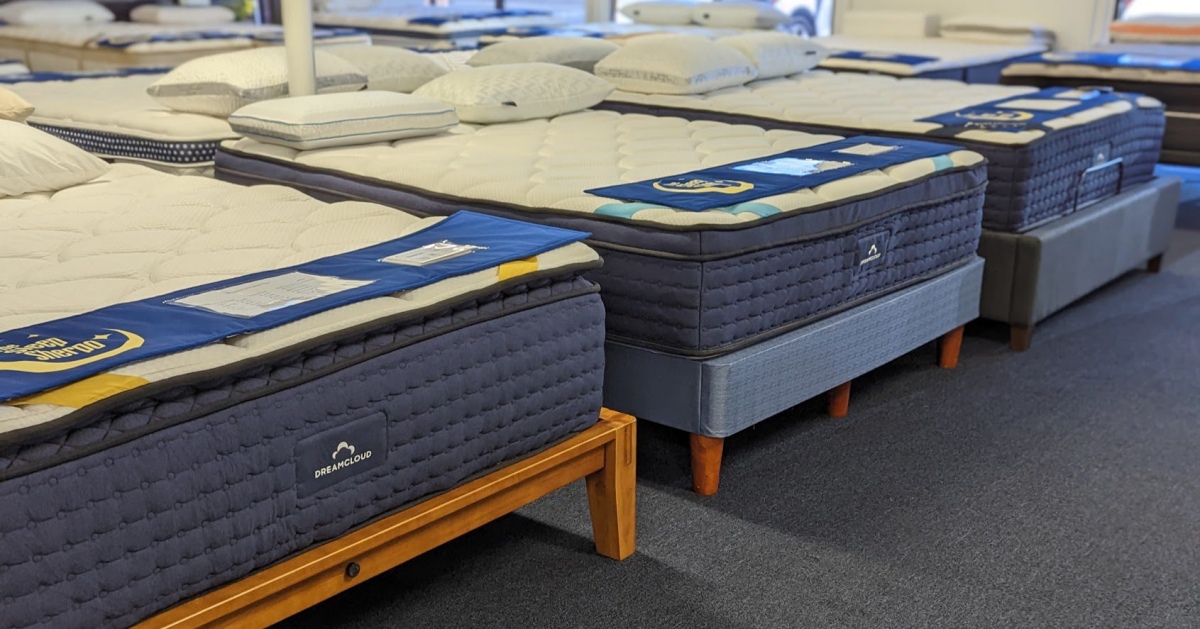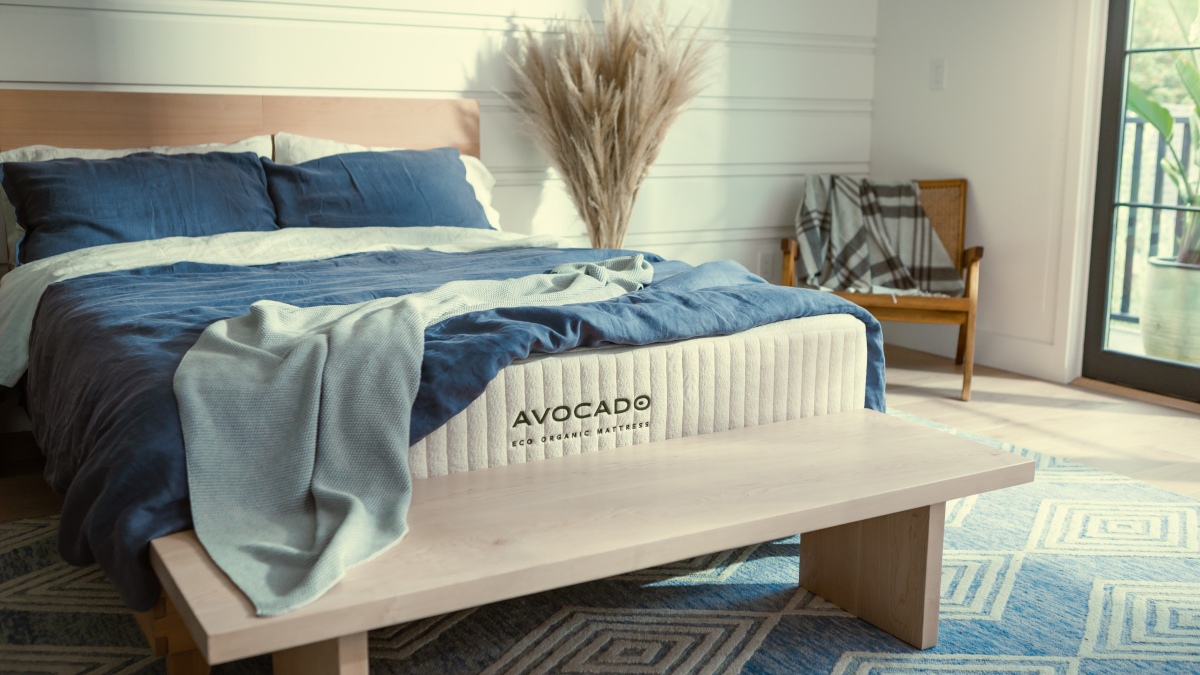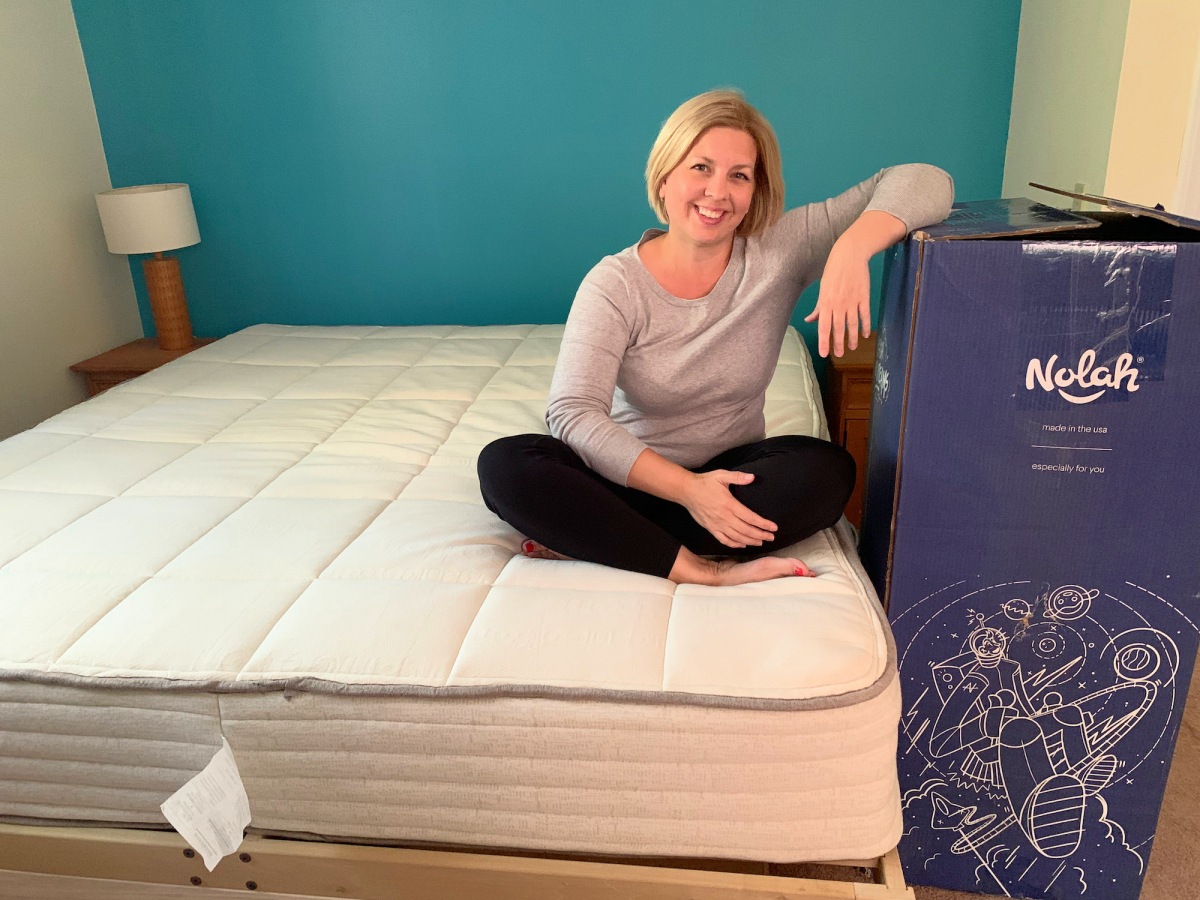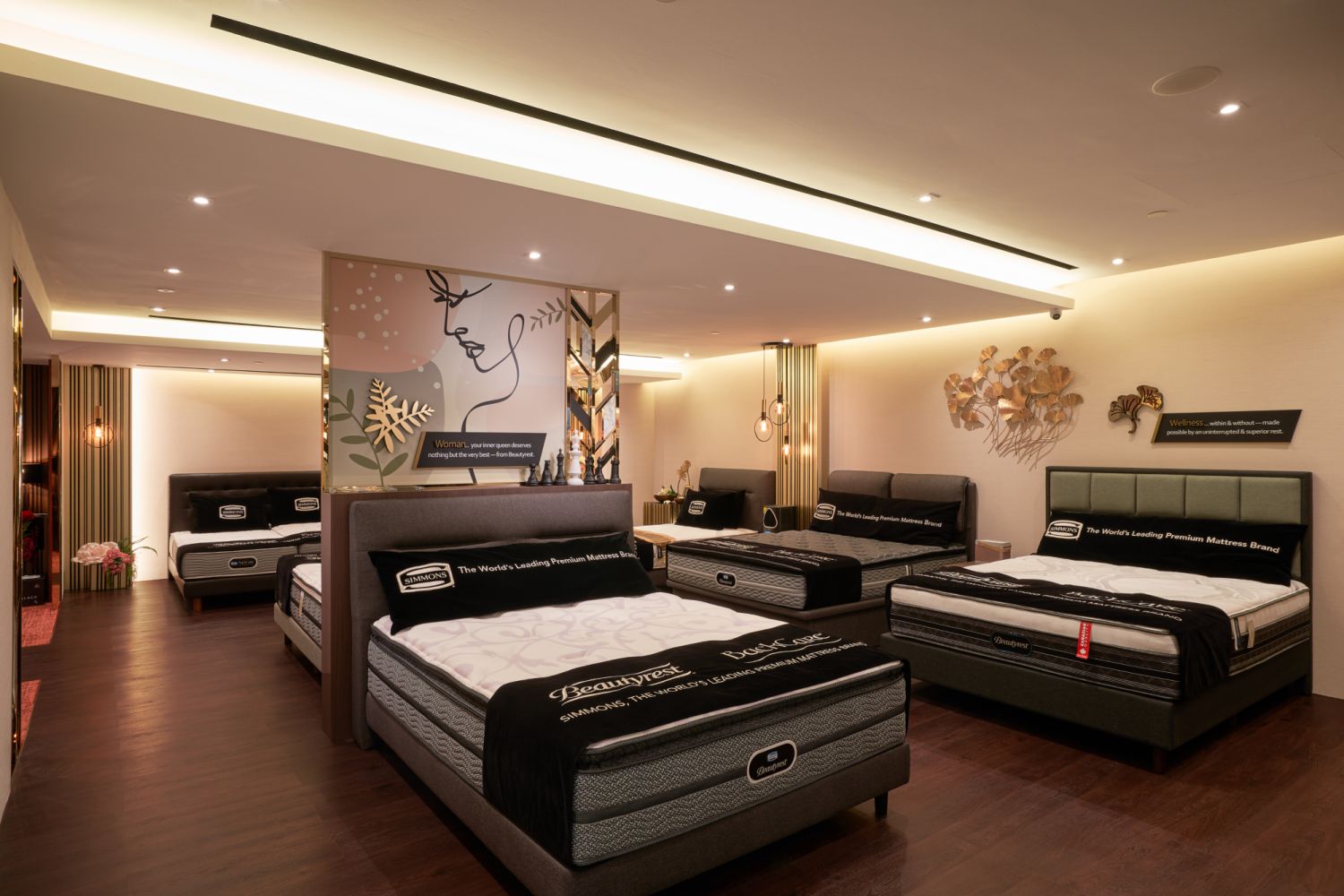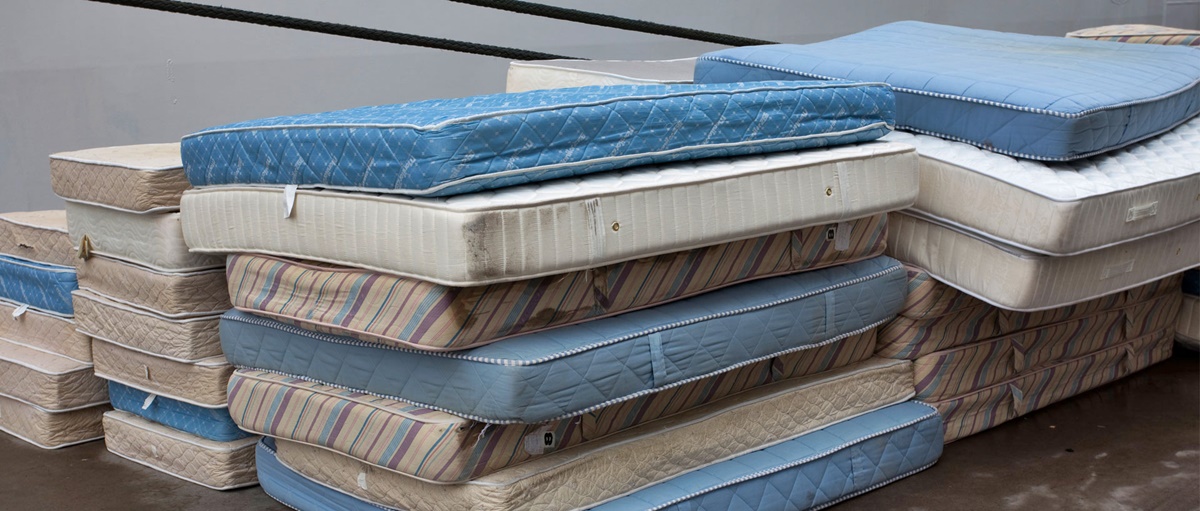Home>Furniture>Bedroom Furniture>Where You Can’t Feel Movement On A Mattress


Bedroom Furniture
Where You Can’t Feel Movement On A Mattress
Modified: December 7, 2023
Shop for bedroom furniture that provides the utmost stability and minimal motion transfer, ensuring you can't feel any movement on your mattress. Choose from our wide selection of quality pieces.
(Many of the links in this article redirect to a specific reviewed product. Your purchase of these products through affiliate links helps to generate commission for Storables.com, at no extra cost. Learn more)
Introduction
When it comes to choosing a mattress, people have different preferences and needs. While some individuals prefer a mattress that provides excellent motion isolation, others may value a bed that allows for movement. In this article, we will explore the various types of mattresses and discuss why some may not offer the desired level of movement.
For some individuals, not feeling movement on a mattress can be beneficial. It can help reduce sleep disturbances caused by a restless partner or pet. Additionally, it can aid in preventing the transfer of motion between sleeping partners, allowing for a more peaceful night’s sleep. However, there are instances where the lack of movement can be a drawback, such as for individuals who prefer a mattress with bounce and responsiveness.
There are several factors that contribute to the lack of movement on a mattress. The construction and materials used in the mattress play a significant role in determining how much movement can be felt. Let’s explore the different types of mattresses and discuss why some may limit the feeling of movement.
Key Takeaways:
- Choose memory foam or latex mattresses for minimal motion transfer and stable sleep surface. Traditional innerspring mattresses offer more bounce and movement, while hybrids strike a balance between support, movement, and motion isolation.
- Consider airbeds for adjustable firmness and customized support, and waterbeds for minimal motion transfer and a unique sleep experience. Ultimately, the right mattress choice depends on personal preferences and sleep needs.
Read more: Why Cant You Recycle Pizza Boxes
Causes of Lack of Movement on a Mattress
The lack of movement on a mattress can be attributed to various factors, including the design, materials, and construction of the mattress. Here are some common causes:
- Memory Foam: Memory foam mattresses are known for their ability to contour to the body and provide exceptional pressure relief. However, this conformity can result in a lack of movement. Memory foam absorbs motion and minimizes motion transfer, making it an excellent choice for individuals who want a peaceful sleep environment. However, this can also limit the feeling of movement on the mattress.
- Latex Foam: Latex mattresses are made from natural or synthetic latex foam. Similar to memory foam, latex foam has the ability to absorb motion and reduce motion transfer. This quality can make the mattress feel more stable and restrict movement. However, some latex mattresses are designed with zones of different firmness levels, which can enhance the responsiveness and allow for more movement.
- Innerspring: Traditional innerspring mattresses are constructed with a system of steel coils that provide support and bounce. While innerspring mattresses typically offer more motion transfer compared to foam mattresses, they still allow for some movement. However, factors such as coil gauge, coil count, and the presence of individually wrapped coils can affect the level of movement felt on the mattress.
- Airbed: Airbeds utilize air chambers that can be adjusted to provide personalized support and firmness. However, the presence of air chambers can limit the feeling of movement on the mattress. When the air chambers are inflated to a higher firmness level, the mattress can feel more rigid and restrict movement.
- Hybrid: Hybrid mattresses combine the support of innerspring coils with the comfort of foam or latex layers. The specific materials used in a hybrid mattress will determine the level of movement experienced. If the bed contains thick memory foam or latex layers, it may reduce the feeling of movement. However, hybrids with thinner comfort layers and more responsive materials can offer a better balance of support and movement.
- Waterbed: Waterbeds, which have a water-filled chamber, can limit movement as the water absorbs motion and reduces motion transfer. This feature can be beneficial for individuals seeking minimal disturbance during sleep. However, the lack of movement may not appeal to those who prefer a mattress with responsiveness and bounce.
It’s important to note that the extent to which movement is limited can vary among different mattress brands and models. Some mattresses are specifically designed to provide more movement while still offering support and comfort. It’s essential to consider personal preferences and sleep needs when choosing a mattress to ensure a comfortable and satisfying sleep experience.
Traditional Innerspring Mattresses
Traditional innerspring mattresses have long been a popular choice for many people. They consist of a system of steel coils that provide support and bounce. The responsiveness of an innerspring mattress can be attributed to the interconnecting springs. When pressure is applied to the mattress, the springs compress and then rebound, creating a sensation of movement.
Compared to memory foam or latex mattresses, traditional innerspring mattresses typically offer more bounce and motion transfer. This can be advantageous for individuals who prefer a mattress that allows for movement, making it easier to change positions during sleep.
However, it’s important to consider the quality and design of the innerspring mattress. The coil gauge, which refers to the thickness of the coils, can affect the level of motion transfer. Mattresses with thicker coils generally offer more support and durability, but they may also limit the feeling of movement compared to those with thinner coils.
Another factor to consider is the coil count, which refers to the number of coils in the mattress. A higher coil count can contribute to better support and reduced motion transfer. Individually wrapped coils, also known as pocketed coils, are another feature to look out for. These coils are individually encased in fabric, allowing them to move independently and provide targeted support. This can enhance the responsiveness and allow for more movement on the mattress.
While traditional innerspring mattresses can provide a good amount of movement, it’s important to find the right balance between bounce and support. Too much movement can lead to sleep disturbances if you share the bed with a partner who frequently moves during the night. Additionally, some people may prefer a mattress that minimizes motion transfer for a more peaceful sleep environment.
Ultimately, the choice between an innerspring mattress and other types of mattresses depends on your preferences and sleep needs. If you enjoy the bounce and responsiveness of an innerspring mattress and value a mattress that allows for movement, it could be a suitable option for you.
Memory Foam Mattresses
Memory foam mattresses have gained immense popularity in recent years due to their ability to conform to the body’s shape and provide excellent pressure relief. This type of mattress is constructed using layers of viscoelastic foam, which is designed to respond to temperature and pressure. The foam softens in response to body heat, allowing it to mold to the contours of the sleeper.
One of the standout features of memory foam mattresses is their exceptional ability to absorb and isolate motion. When one person moves on the mattress, the memory foam absorbs the movement and minimizes motion transfer. This property makes memory foam mattresses an excellent choice for individuals who share a bed with a partner who frequently tosses and turns during the night. It helps create a sleep surface that is more stable and less likely to disturb the other person’s sleep.
The motion isolation aspect of memory foam mattresses, however, can limit the feeling of movement on the bed. The foam molds to the body, creating a sensation of being cradled and engulfed. While this can provide a sense of support and comfort, it may feel less responsive and restrict movement compared to other mattress types.
It’s worth noting that not all memory foam mattresses are the same. The density and firmness of the memory foam layers can influence the level of movement experienced on the bed. A mattress with higher density foam will generally offer more support and reduce the feeling of movement. On the other hand, a mattress with lower density foam may be more responsive and allow for more movement. Similarly, the thickness of the memory foam layer can also affect the overall feel of the mattress.
To cater to different preferences, some memory foam mattresses are designed with zones of different firmness levels or with additional layers of responsive foam. These features can enhance the mattress’s ability to provide movement while still offering the contouring comfort that memory foam is known for.
If you value a mattress that minimizes motion transfer and provides adaptive pressure relief, a memory foam mattress can be an excellent choice. However, if you desire a mattress with more bounce and responsiveness, you may want to consider other types of mattresses that offer a different feel.
Latex Mattresses
Latex mattresses have gained popularity among individuals seeking a combination of comfort, support, and natural materials. These mattresses are made from either natural latex or synthetic latex foam, which is derived from the sap of rubber trees or manufactured using synthetic materials.
One of the distinguishing features of latex mattresses is their ability to provide a balance of contouring support and responsiveness. Latex foam is known for its buoyancy, which allows it to respond quickly to changes in pressure and movement. This provides a mattress that offers some level of bounce, making it easier to move around during sleep.
Similar to memory foam mattresses, latex mattresses can also absorb motion and reduce motion transfer. When one person moves on a latex mattress, the foam absorbs the movement, preventing it from being felt by the other person. This quality can contribute to a more stable sleep surface and a reduction in sleep disturbances caused by a restless partner.
The level of movement experienced on a latex mattress can depend on various factors, including the firmness of the mattress and the thickness of the latex foam layer. Firmer latex mattresses tend to offer less sinkage, providing a more responsive feel and allowing for greater movement. On the other hand, softer latex mattresses may contour more closely to the body, limiting some movement.
It’s important to note that not all latex mattresses are the same. Some latex mattresses are designed with different zones or layers of varying firmness to provide targeted support and enhance the responsiveness of the bed. Additionally, the type of latex used can also influence the feel and movement on the mattress. Natural latex tends to have a more elastic and springy feel, while synthetic latex may offer a slightly different sensation.
Overall, latex mattresses strike a balance between motion isolation and movement. They provide a comfortable and supportive sleep surface while still allowing for some degree of movement. If you value a mattress that offers responsiveness, natural materials, and motion isolation without completely restricting movement, a latex mattress may be a suitable choice.
If you can’t feel movement on a mattress, it may be due to the use of memory foam or pocketed coil technology, which helps to minimize motion transfer. Look for mattresses with these features if you want to reduce disturbance from a restless partner.
Read more: Where Can You Buy Purple Mattress
Airbeds
Airbeds, as the name suggests, utilize air chambers as the primary support system. These mattresses allow for adjustable firmness levels by inflating or deflating the air chambers based on individual preferences. The ability to customize the firmness makes airbeds a popular choice for people with specific support needs.
When it comes to movement on an airbed, the level of responsiveness and bounce can vary depending on the firmness level. When the air chambers are inflated to a higher firmness setting, the mattress can feel more rigid and restrict movement. On the other hand, lowering the firmness level allows for more give and responsiveness, making it easier to move around on the bed.
While airbeds do offer some degree of movement, they may not provide the same bounce and responsiveness as traditional innerspring or latex mattresses. The sensation of movement on an airbed can be influenced by factors such as the number of air chambers, the design of the air distribution system, and the presence of comfort layers.
Some airbeds have multiple air chambers, allowing for individualized firmness settings for each side of the bed. This feature is particularly useful for couples who have different preferences regarding firmness and movement. It allows each person to adjust their side of the mattress to their desired level of support and movement.
It’s important to note that while airbeds can offer some level of movement, they may not provide the same amount of motion isolation as memory foam or latex mattresses. Airbeds can transmit more motion across the surface, which may not be ideal for individuals who share a bed with a partner prone to tossing and turning.
Overall, airbeds strike a balance between providing adjustable support and allowing for movement. The ability to customize the firmness level can cater to individual preferences, making it easier to find a level of support and movement that suits your needs. If you value the ability to adjust firmness and desire a mattress that allows for some movement, an airbed could be a worthy option to consider.
Hybrid Mattresses
Hybrid mattresses are a combination of different materials, typically combining an innerspring support system with foam or latex comfort layers. This unique construction aims to provide the benefits of multiple mattress types, offering a balance of support, comfort, and movement.
The innerspring support system in a hybrid mattress provides a foundation of coils that offer bounce, responsiveness, and durability. The presence of coils allows for a certain level of movement on the bed, making it easier to change positions during sleep.
The comfort layers of a hybrid mattress are typically made of foam or latex, which offer pressure relief and contouring support. The materials used in these comfort layers can influence the level of movement experienced on the mattress.
If a hybrid mattress has thick memory foam or latex layers, it may limit the feeling of movement. These materials are known for their ability to absorb and isolate motion, reducing the transfer of movement across the bed. This can be beneficial for individuals who share the bed with a partner who frequently moves during the night, as it helps create a more stable sleep environment.
On the other hand, if a hybrid mattress has thinner comfort layers and uses more responsive materials, it can offer a better balance of support and movement. For example, the inclusion of latex foam or foam with buoyancy properties can enhance the responsiveness of the mattress, allowing for more movement and a more traditional feel.
The specific design and construction of a hybrid mattress can vary, with some models incorporating zones of different firmness levels to provide targeted support and comfort. This feature can help optimize movement and responsiveness in areas where it is desired most.
Hybrid mattresses offer a versatile option for individuals who desire both support and movement. They combine the buoyancy and motion transfer properties of innerspring mattresses with the pressure relief and contouring abilities of foam or latex. If you value a mattress that allows for movement while still offering the benefits of both mattress types, a hybrid mattress may be the perfect choice.
Waterbeds
Waterbeds are a unique type of mattress that uses a water-filled chamber as the primary support system. These mattresses offer a distinct feel and can provide a different sleep experience compared to other mattress types.
When it comes to movement on a waterbed, the sensation can be quite different from other mattresses. The water-filled chamber absorbs and distributes motion, making the movement on a waterbed feel gentle and soothing. This can be beneficial for individuals who prefer minimal disturbance during sleep.
One of the key advantages of a waterbed is its ability to reduce motion transfer. When one person moves on a waterbed, the water absorbs the movement, preventing it from being transmitted across the bed. This can be particularly beneficial for couples who have different sleeping patterns or share a bed with someone who moves a lot during the night.
While waterbeds excel in motion isolation, they may not offer the same level of bounce and responsiveness as other mattress types. The water-filled chamber creates a stable sleep surface that limits the feeling of movement. This lack of responsiveness can be a drawback for individuals who prefer a mattress with more bounce and movement.
It’s important to note that there are different types of waterbeds available. Traditional waterbeds consist of a large, free-flowing water chamber without any additional support structures. These mattresses provide a unique floating feeling but may lack the support and customization options found in other mattress types.
Modern waterbeds, also known as waveless or semi-waveless waterbeds, include additional layers or baffles within the water chamber. These layers help reduce the wave motion and create a more stable sleep surface. This design can offer a better balance between movement and support.
Ultimately, the choice of a waterbed depends on personal preference and sleep needs. If you value minimal motion transfer and desire a unique sleep experience, a waterbed can be an excellent choice. However, if you prefer a mattress with more responsiveness and movement, other mattress types may better suit your needs.
Conclusion
Choosing the right mattress is a highly personal decision, and the level of movement on a mattress is an important factor to consider. While some individuals prefer a mattress that limits motion and provides excellent motion isolation, others may value a bed that allows for movement and provides a more responsive feel.
Throughout this article, we have explored different types of mattresses and discussed why some may offer a reduced feeling of movement. For those seeking minimal motion transfer, memory foam and latex mattresses are excellent options. Both of these mattress types excel at absorbing and isolating motion, creating a stable sleep surface.
Traditional innerspring mattresses provide more bounce and movement, making it easier to change positions during sleep. Hybrid mattresses combine innerspring support systems with foam or latex comfort layers, striking a balance between support, movement, and motion isolation.
Airbeds offer the unique ability to adjust the firmness level, allowing for customized support and movement preferences. Waterbeds provide a distinct feel, with minimal motion transfer and a gentle, soothing movement.
Ultimately, the right choice of mattress depends on your personal preferences and sleep needs. Consider factors such as the level of motion isolation desired, the balance between support and movement, and the specific materials and construction of the mattress.
By understanding the characteristics of different mattress types and how they affect movement, you can make an informed decision and find the mattress that best suits your sleep preferences. Remember, a good night’s sleep is essential for overall well-being, so choose a mattress that promotes restful sleep and ensures your comfort throughout the night.
Frequently Asked Questions about Where You Can't Feel Movement On A Mattress
Was this page helpful?
At Storables.com, we guarantee accurate and reliable information. Our content, validated by Expert Board Contributors, is crafted following stringent Editorial Policies. We're committed to providing you with well-researched, expert-backed insights for all your informational needs.
